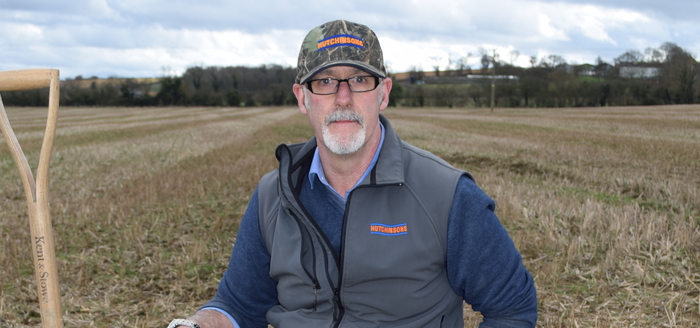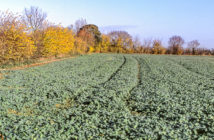Spring is an ideal time to assess soils for potential structural or other soil health issues, but only do so when there is sufficient moisture for an accurate result, says leading agronomy firm Hutchinsons.
Problems such as compaction can sometimes be misdiagnosed in dry soil, which may appear “tight” or compacted when it actually just needs more moisture, explains the firm’s technical manager Dick Neale.
“Many growers check soils for compaction straight after harvest before autumn cultivations begin, but when ground is baked dry in July or August, it can appear compacted when it’s not. This often results in unnecessary use of the subsoiler or other deep cultivations which destroy natural structuring.”
Spring is generally a much better time to inspect soils and identify areas where remedial work may be required later in the season. There are three key reasons for this, he says:
- Moisture: A much more accurate assessment of soil texture and porosity can be made when soil is moist, but not saturated. Moist soils will look and feel very different to those that are very dry or saturated. Earthworms also need a moist habitat, so testing moist soils makes it easier to accurately estimate the number and species present.
- Growing crops: Assessing soils when there is a growing crop in the ground allows rooting to be examined and makes it easier to identify potential issues, such as a compacted layer preventing root penetration. It may also be easier to see which areas of the field need closer inspection if there are visual differences in crop growth that could be due to soil factors.
- Rising temperatures: Soil temperature has a significant impact on many biological and chemical processes, such as the decomposition of biological material and the rate at which nutrients are made available. As soils warm in the spring, these processes will increase to give a better indication of overall soil health.
Mr Neale says accurately benchmarking the soil’s current status is the essential starting point to formulating a plan to improve soil health.
The Hutchinsons Healthy Soils service uses in-field and laboratory techniques to analyse the three core components of soil, so provides the ideal starting point. These core components are broadly categorised into:
- Physical properties (texture, bulk density, compaction)
- Biological (organic matter, carbon content, earthworms and other “soil life”)
- Chemical (pH, minerals, nutrients and availability to plants).
All components are heavily interlinked, so a “healthy” soil must balance everything and not concentrate on any area in isolation – getting one aspect out of balance can have serious knock-on implications elsewhere, says Mr Neale.
The main aspects examined in the Healthy Soils report include:
- A review of historical land use, current cropping, cultivations, drainage, key soil features
- Visual structural assessment (VESS test) – identifies issues such as compaction. Auger test (to 1m where possible) to asses structure, rooting, colour, odour, etc. Soil is scored accordingly
- Infiltration test – soaking a column of dyed water into the ground shows how well it can permeate through the profile, highlighting possible issues
- Assessment of earthworm populations within the top 20cm
- pH, organic matter content and nutrient status (macro and micro)
- Bulk density (indicator of possible compaction)
- Cation exchange capacity – indicates soil’s ability to “hold on” to nutrients.




